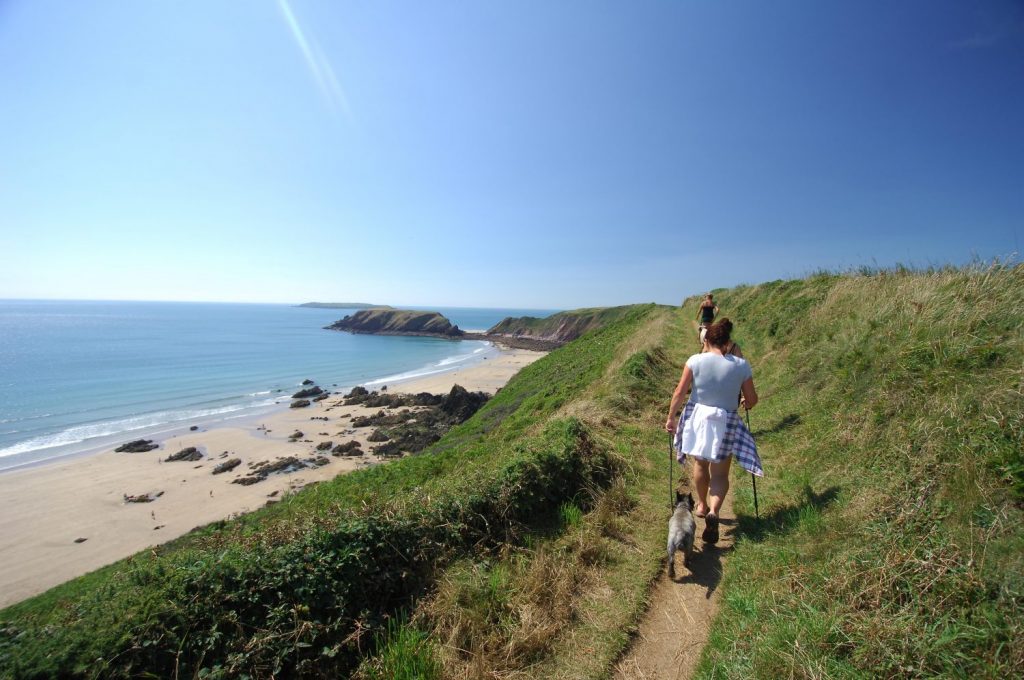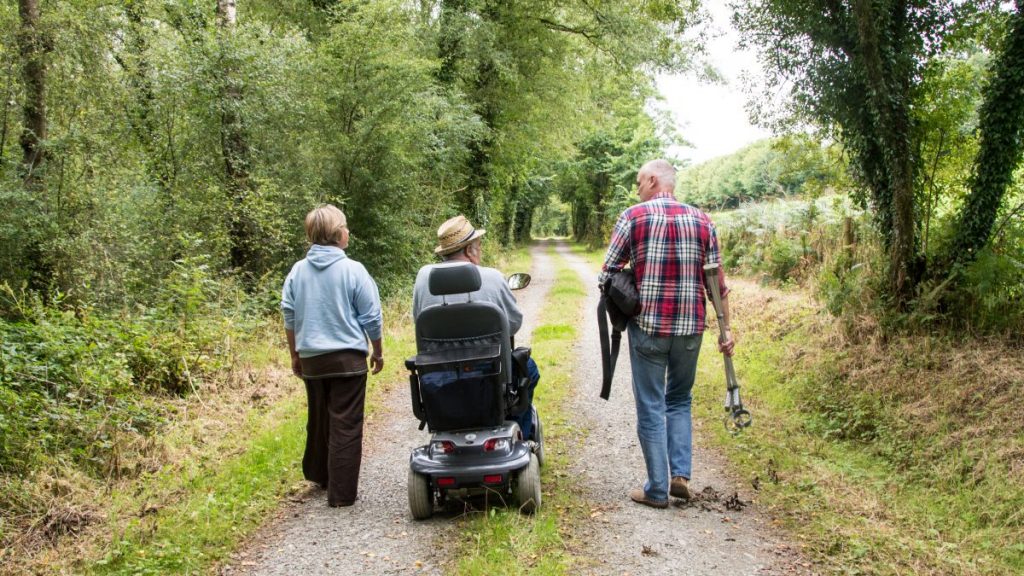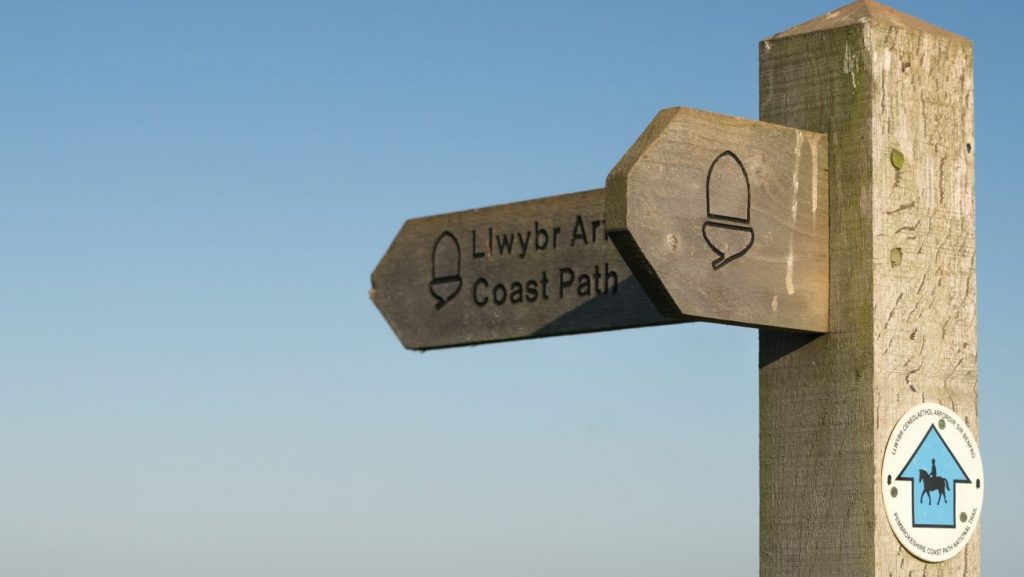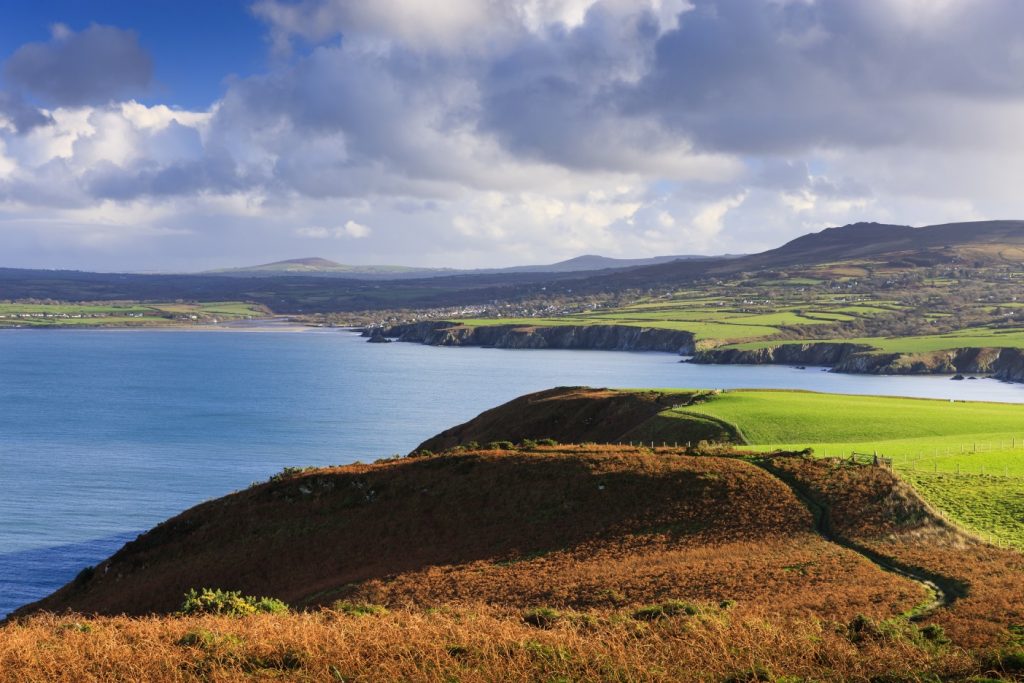DISTANCE/DURATION: 2.9 miles (4.6km) 1 hour 30 minutes
PUBLIC TRANSPORT: *Strumble Shuttle 404 (*seasonal, hail and ride)
CHARACTER: Coastal walk, green lanes, fields and livestock, wet and muddy in places, stream to cross 0.3 mile (0.5 km) minor road walking.
LOOK OUT FOR: Traditional Pembrokeshire cottages, coastal views, wildflowers and seals.
CAUTION: When stream floods, diversion of 2km (1km on minor road). Take great care if gaining access to Pwllcrochan beach.
The coast between Strumble Head and St David’s Head has some of the most dramatic scenery in the National Park. It is a landscape of headlands and bays, created during the Ordovician period between 500 and 440 million years ago.
Then volcanoes were active in the area throwing out lava flows that cooled to form very hard igneous rocks. Over millions of years these rocks have resisted erosion to become rocky crags like Garn Fawr, just to the north of this route.
The coastal headlands too, like Penmorfa and Penbwchdy (pen is Welsh for head), are features because their igneous rocks stand up to the sea. The bays, like Pwllcrochan, have eroded faster because they are made of softer Ordovician rocks.
The power of the sea is seen at its best during the many storms that batter this coast. One especially violent storm, the gale of 1859, is credited with creating the shingle banks at Aber Bach and its neighbour Aber Mawr overnight. In fact, the banks were formed gradually as sea levels rose at the end of the Ice Age.
The cliffs above Aber Bach and Pwllcrochan are awash with colour in spring and summer when wild flowers and gorse are in bloom. Such a rich flora means that there are many butterflies to be seen, including big, slow-flying graylings and small blues.
As you walk take time to stop and scan the sea as the coast around Strumble Head is a great place to see marine mammals.
Porpoises are quite small, slate grey in colour and rarely do more than break the water surface. Larger, pale grey bottle-nosed dolphins are very agile and will sometimes leap clear of the sea.
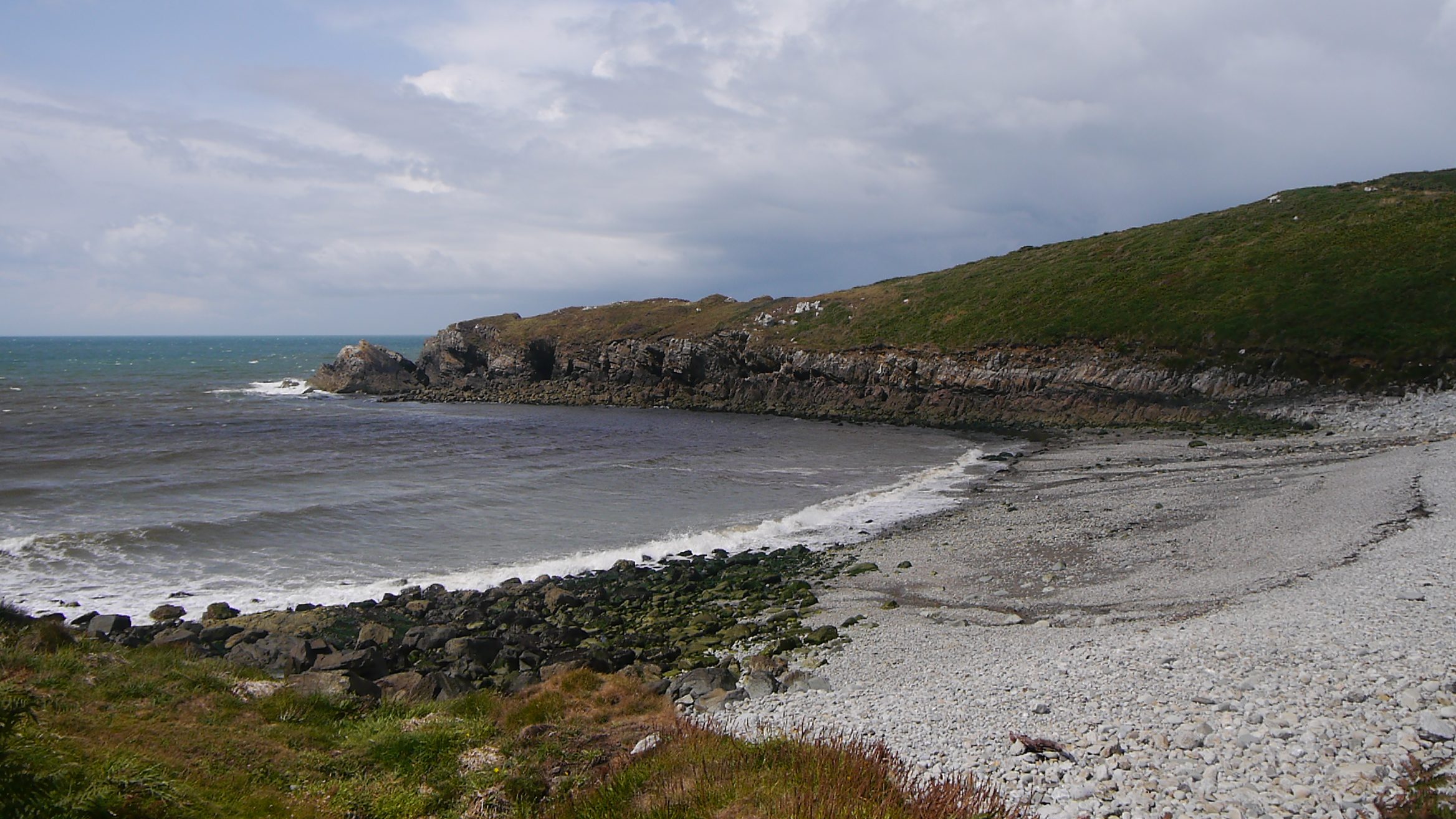
Find this walk
Grid ref: SM886355
SAFETY FIRST!
- Take great care when on the Coast Path
- Stay on the path and away from cliff edges
- Wear boots and warm, waterproof clothing
- Take extra care in windy and/or wet conditions
- Always supervise children and dogs
- Leave gates and property as you find them
